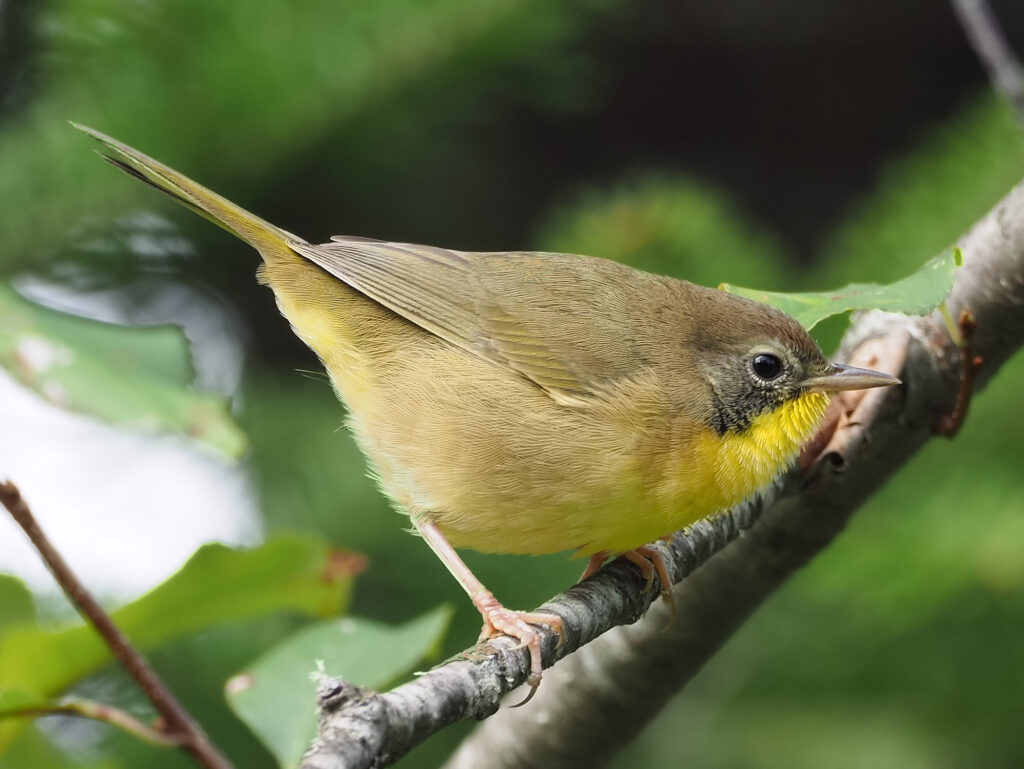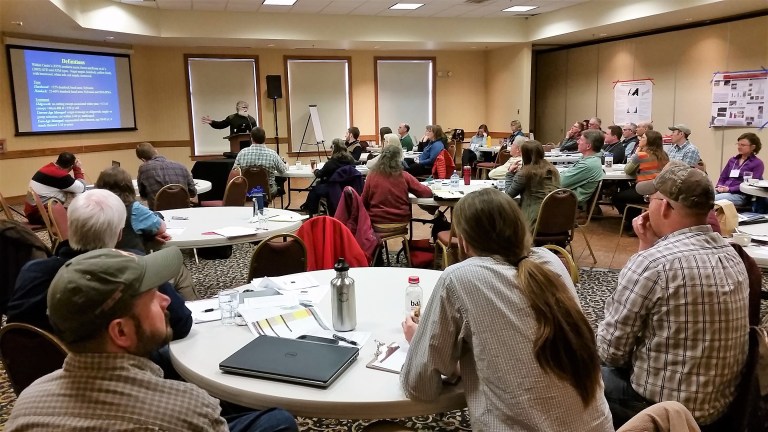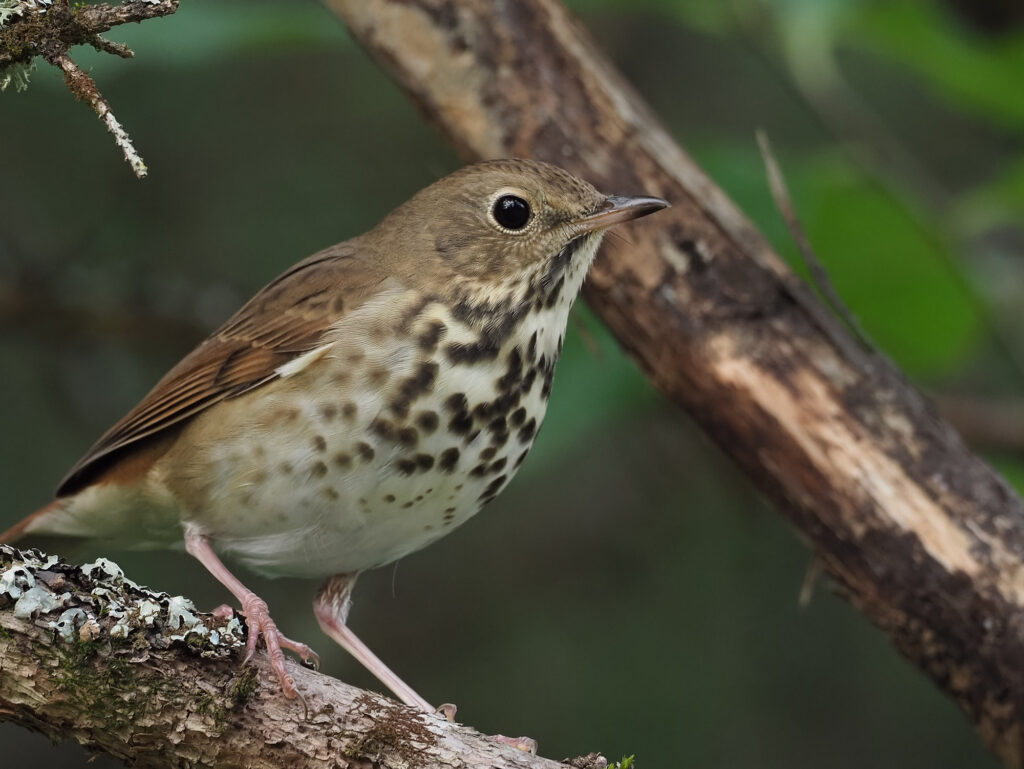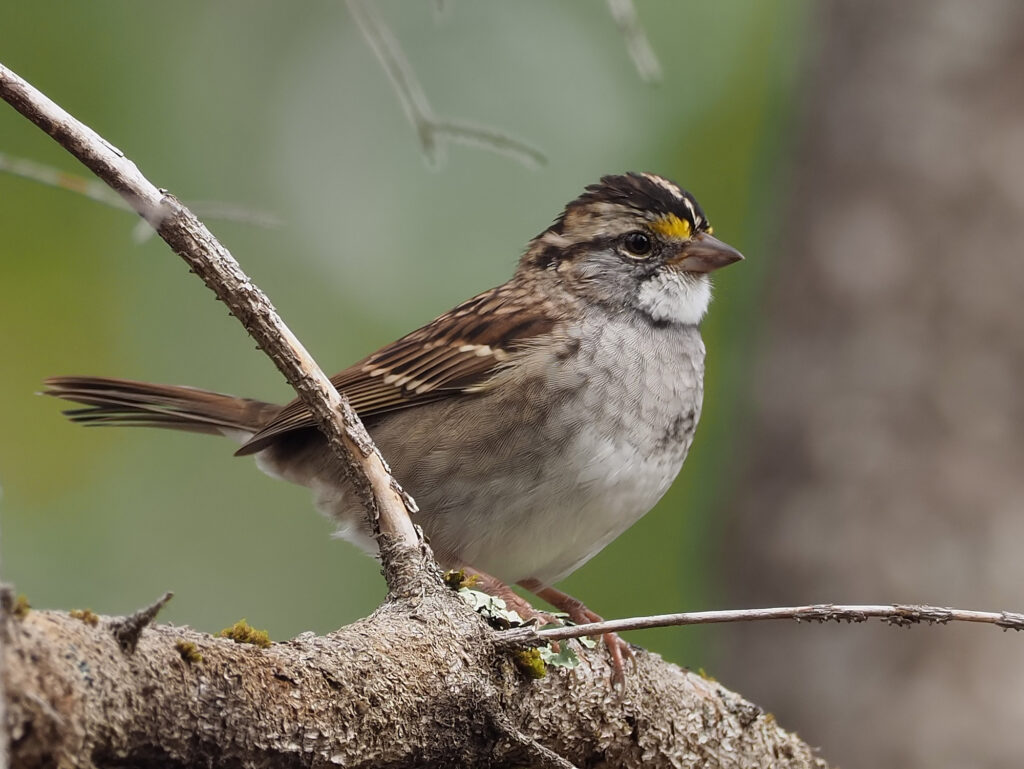Hello partners of the Northern Forest Birds Network,

Common-yellowthroat by Jonathan Lang
It’s been awhile since you have heard from us, but rest assured it’s not for lack of activity. Since our last gathering in Ashland, we have increased our communications of forest bird news, broadened our steering committee, realigned our partnership within the Upper Mississippi/Great Lakes Joint Venture, and developed a priority species list to guide forest bird conservation activities in the region. Now we’d like to take a moment to brief you on these efforts, and, over the year ahead, provide you a series of updates on exciting forest bird projects in the region. Please see the end of this update for an invitation to share your story via our project spotlight series. Because, when we work together, we can do great things for birds! Thank you.
Background
The Northern Forest Birds Network (NFBN) began as a working group within the Midwest Coordinated Bird Monitoring Partnership in 2013 and has since expanded its focus from coordinated monitoring and data management to integrating science-based needs of forest birds with land management activities. Our vision is to provide leadership and guidance in monitoring, research, and management actions to ensure thriving, diverse northern forest bird communities across the U.S. portion of the boreal hardwood transition zone (Bird Conservation Region 12). To enact that vision, we are committed to the following goals:
- Northern forest bird partner organizations actively share information about the biology, ecology, and status of northern forest birds.
- Northern forest bird partner organizations coordinate and collaborate to ensure that the conservation needs of northern forest birds are addressed.
- The best available science is used to assess the status and productivity of northern forest birds.
- Monitoring and research data are used to inform and evaluate management practices, which are used to deliver conservation actions that benefit northern forest birds.
2018 Workshop Recap
In April 2018, we hosted a workshop to 1) re-engage and provide updates to the broader Working Group community, 2) kick-start several projects, and 3) provide training on the Midwest Avian Data Center. Over 50 participants representing 20 organizations attended the event in Ashland, Wisconsin (in spite of a record-breaking snowstorm). Several insights and recommendations emerged from the workshop, including the following:
- We need to narrow our focus to the species most in need or for which we have greater stewardship responsibility.
- We need to translate broad-scale forest bird conservation goals to be actionable and relevant for stand-level decision making.
- We need to integrate climate adaptation strategies into our discussions, planning, and stand-level decision making.
- The Northern Forest Bird Network is needed to foster coordination and communication, provide context (via shared goals) to individual projects throughout our geography, and provide linkages across the full annual cycle.
To access the full workshop proceedings, including links to the presentations, visit this website: http://www.wisconsinbirds.org/northern-forest-birds/.

2018 Workshop by Ryan Brady
Accomplishments Since 2018
Steering Committee
The Steering Committee serves as an advisory body by providing guidance, leadership, support, and oversight to the Northern Forest Birds Network. From 2018-2019, we expanded membership in our Steering Committee to be more representative and inclusive of the array of partners and interests in BCR 12. We also developed a charter to solidify roles, expectations, and terms of service. We thank the following individuals who currently serve on our Steering Committee (listed alphabetically):

Hermit Thrush by Jonathan Lang
- Ryan Brady, Wisconsin Department of Natural Resources (WI)
- Dave Fehringer, The Forestland Group (MI)
- Erin Giese, University of Wisconsin-Green Bay (WI)
- Ted Gostomski, U.S. National Park Service (WI)
- Alexis Grinde, Natural Resources Research Institute (MN)
- Kayla Knoll, American Bird Conservancy (MI)
- Michael Lynch, Forest Stewards Guild (MN)
- Katie O’Brien, U.S. Fish and Wildlife Service (MI)
- Peg Robertsen, U.S. Forest Service (MN)
News from the Northern Forest
We are indebted to Ted Gostomski for launching the News from the Northern Forest email broadcasts as a follow-up to our 2018 workshop. Ted has remained steadfast in communicating scientific findings, workshops and trainings of interest, and funding opportunities. We will soon be moving our web-based communications to a new platform and will archive them in a permanent web home (more to come on this later in the fall).
Alignment with the Upper Mississippi/Great Lakes Joint Venture
Shortly after our 2018 Workshop, the Midwest Coordinated Bird Monitoring Partnership underwent a transition, whereby its active working groups were realigned with other regional bird conservation partnerships, such as Flyway Technical Committees and Joint Ventures. The Upper Mississippi/Great Lakes Joint Venture (UMGLJV; https://umgljv.org/) is a self-directed partnership of diverse organizations that deliver the full spectrum of bird conservation through regionally-based, biologically-driven, landscape-oriented partnerships. The UMGLJV encompasses the entire U.S. portion of BCR 12, and, since the focus of the Northern Forest Birds Network had expanded from coordinated monitoring to also include forest bird conservation design and implementation, alignment with the UMGLJV made good sense. We are well-positioned to serve as a coordinating network for the UMGLJV in BCR 12, and many of our Network members have been engaged in helping to develop and review the UMGLJV’s 2020 Landbird Conservation Strategy. More to come on the 2020 Strategy in fall/winter 2020.
Priority Forest Bird Species-Habitat Matrix
In 2019, our Steering Committee began work to fulfill the 2018 Workshop request to identify species that conservationists, land managers, and foresters could rally around for doing on-the-ground management activities that benefit these species while still maintaining regular forest management efforts. Therefore, we developed a list of agreed-upon criteria, including climate change (a ringing outcome/theme from participants), and generated a solid priority species list. This list can be used to inform the development of guidebooks and BMPs for foresters and land managers to use in their everyday forest management activities. The Priority Forest Bird Species-Habitat Matrix that resulted, along with how it is already being used by several Network partners, will be the focus of our next email update (stay tuned).
What’s Ahead?
Our Steering Committee has committed to a series of updates over the next several months. Here is a sampling of topics that we will be covering:

White-throated Sparrow by Jonathan Lang
- Priority Forest Bird Species-Habitat Matrix
- Project Spotlights – showcasing Network partners who are translating broad forest bird conservation goals into stand-level decision making, leading cutting edge forest bird research, and integrating climate science and adaptation strategies into local forest management planning. Upcoming spotlights include the following:
- o Forestry for Michigan Birds
o Habitat Use of Juvenile American Woodcock and Golden-winged Warblers in Managed Forests
o Ecology and Habitat Use of Boreal Chickadees
o Integrating Climate Science into Forest Land-use Planning
We are excited to share news and updates from our Network partners and others doing work to help forest birds. If you have a project or update that you would like to see featured in our email updates, or to learn more about the Northern Forest Birds Network and how to become involved, contact Katie O’Brien (katie_obrien@fws.gov).


